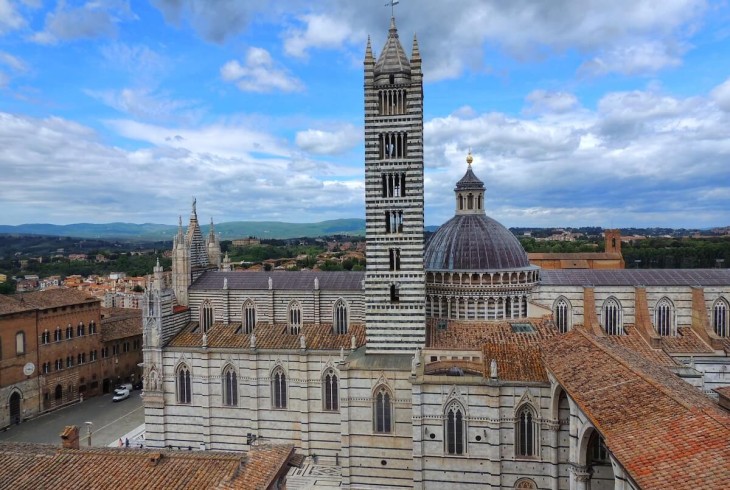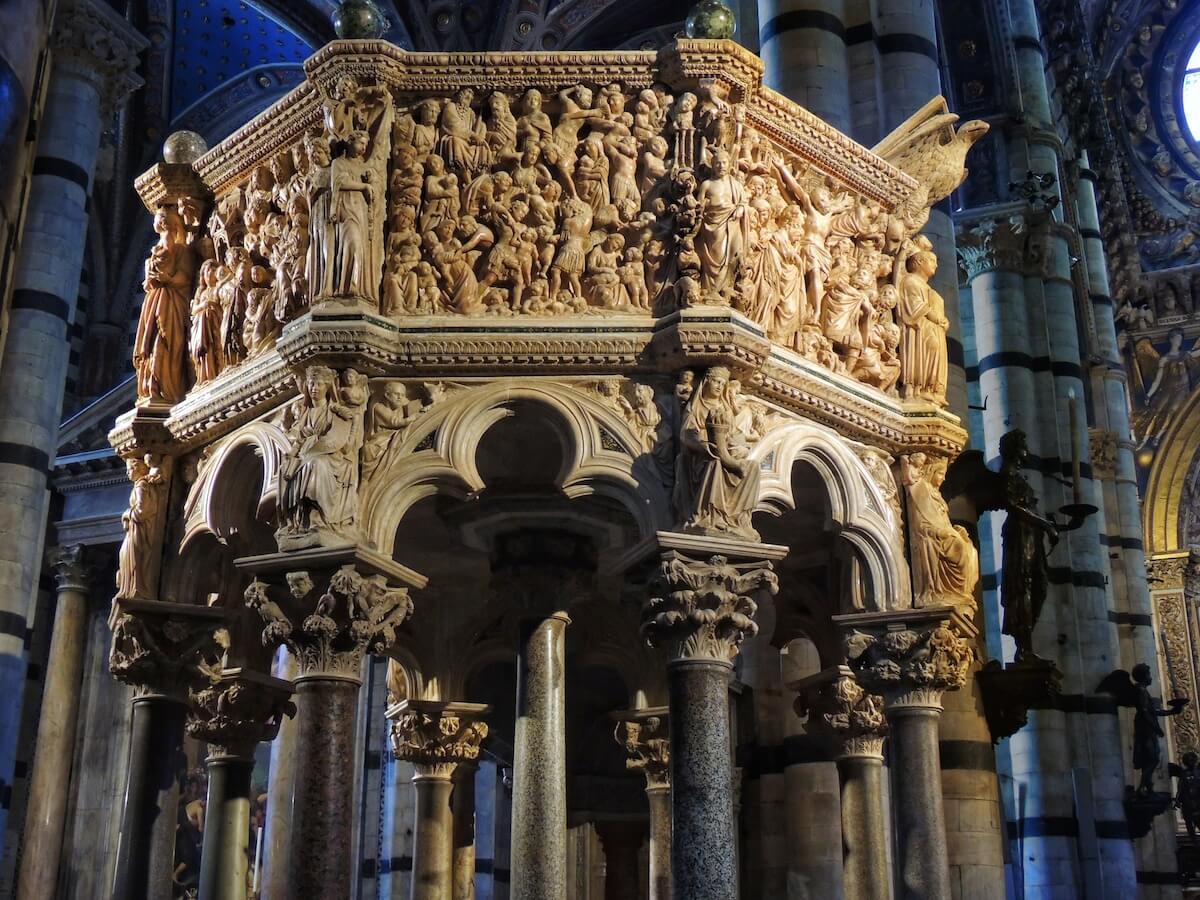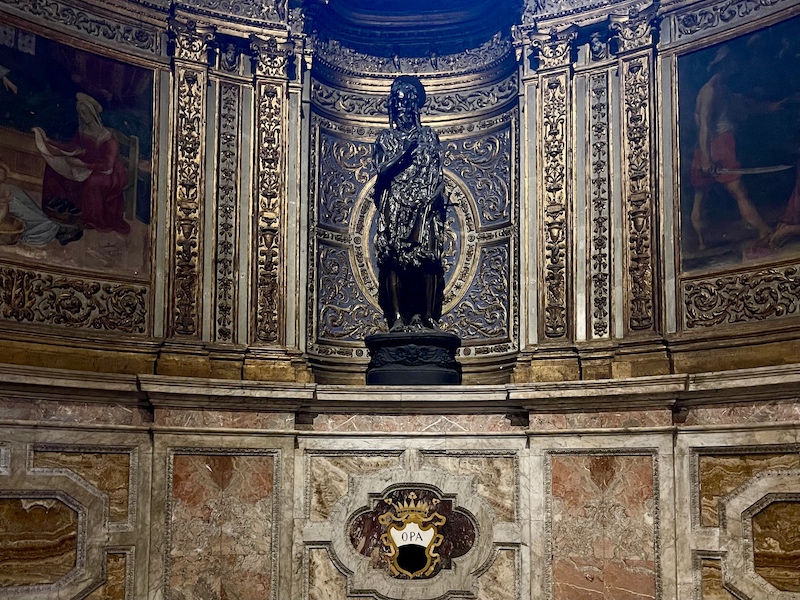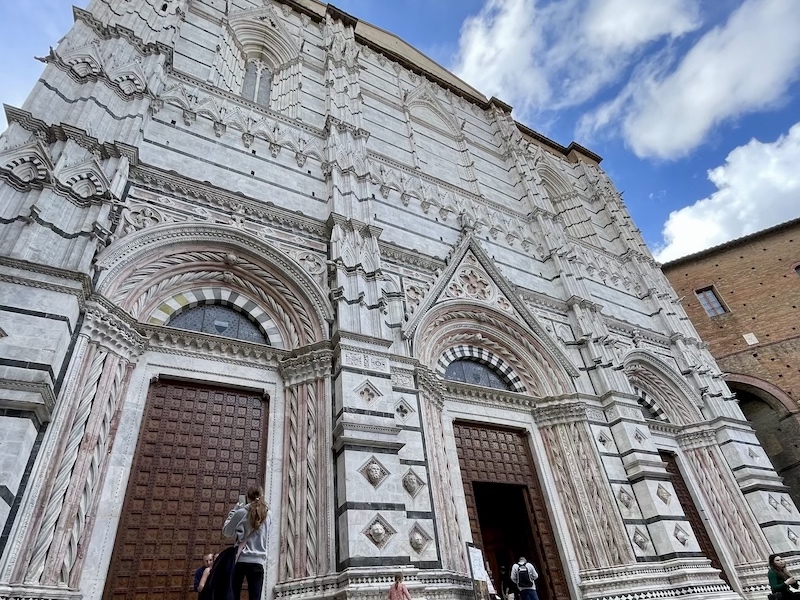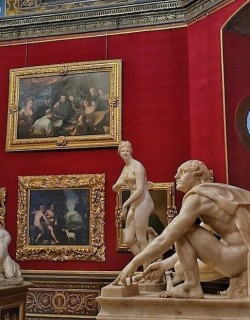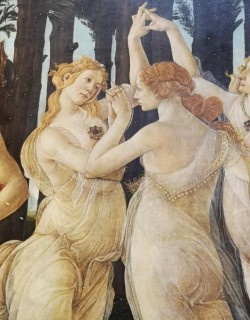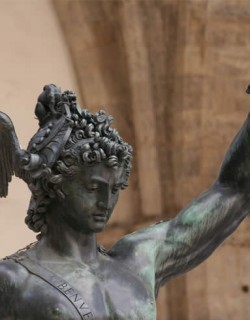Siena is Italy’s finest Gothic city, and nowhere is its singular character more powerfully expressed than in its spectacular cathedral. Rising from the heart of the medieval center, the Duomo is at once a place of worship, an artistic showcase and a majestic physical embodiment of the city’s ambition and civic identity. From its soaring, sculpture-encrusted façade to the dizzying heights of its starry dome, the cathedral was first conceived in the late twelfth century to rival those of Florence and Rome, and took all of two centuries to complete - a testament to Siena’s wealth, piety, and unrivalled artistic heritage.
When Siena was at its all-powerful pomp in the 14th century plans were made to double its size. The Fates rebelled at Sienese hubris: the Black Death arrived in the city in 1348, stopping the plan in its tracks. But not worry: the medieval cathedral is massive enough as it is, and its interior is a truly remarkable ensemble of Romanesque-Gothic artistry, enriched with masterpieces from every era of art.
It’s fascinating to trace these centuries of competing visions as you wander, where testaments to medieval piety stand side by side with the fruits of Renaissance humanism and Baroque bombast. Every corner reveals masterpieces of boundless daring by artists like Nicola Pisano, Donatello, Michelangelo, Pinturicchio and Bernini.
Discover the highlights you can’t afford to miss with our guide to what you need to see in Siena’s Duomo!
1. The Façade
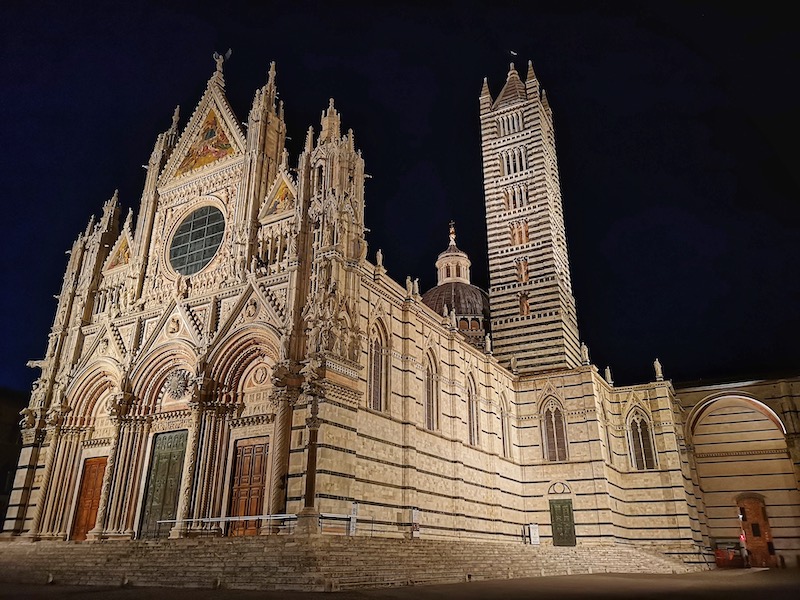
Siena’s Duomo sets its stall out as one of Italy’s finest edifices at first sight. The façade was completed around 1317, and its distinctive marble stripes of pink, white and green captures the unique aesthetic spirit of Siena’s Romanesque-Gothic architecture better than anywhere else in the city. Giovanni Pisano’s lower part of the facade is divided into three mighty portals featuring arches, sinuous twisted columns and delicate ornamentation, while the more purely Gothic upper portion, designed by Camaino di Crescentino, is dominated by a massive rose window surrounded by soaring spires. Severe prophets, patriarchs, sibyls and philosophers loom from every possible perch on the sparkling, pinnacled facade, peering down in silent witness to Siena’s piety.
2. The Marble Floor
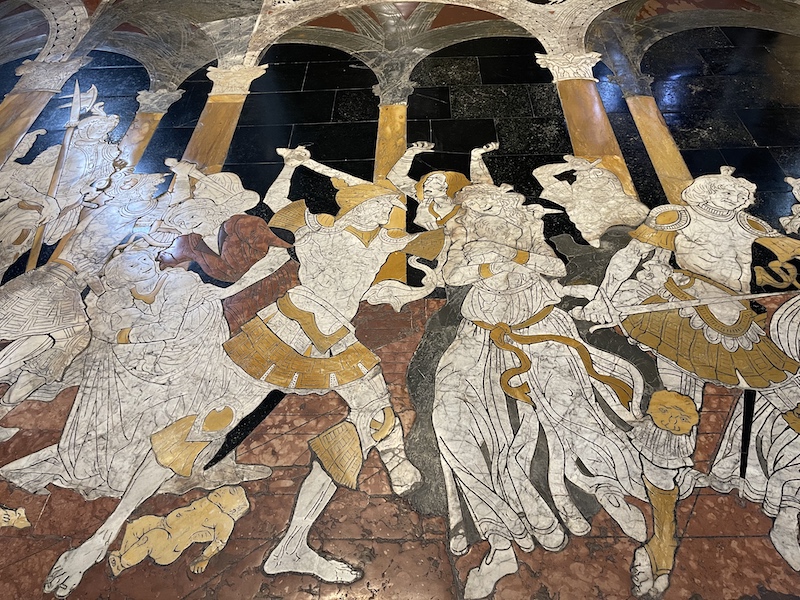
“The most beautiful, largest and most magnificent floor that ever was made". So the first art historian of the Renaissance, Giorgio Vasari, described the jaw-dropping floor of Siena Cathedral, and it really is one of the most magnificent testaments to Renaissance art in existence. Comprising 56 separate marble mosaics, this astonishing inlaid masterpiece took centuries to complete and involved some of the greatest artists of the Renaissance. You’ll glimpse Hermes Trismegistus teaching the seven liberal arts, a dramatic Massacre of the Innocents, allegories of Virtue and Vice and a celebration of Siena’s civic pre-eminence. For most of the year the floor remains covered to protect its delicate surface; only from late summer to autumn is it fully revealed in all its glory.
3. Nicola Pisano’s Pulpit
Carved between 1265 and 1268 by Nicola Pisano (and later finished by his son Giovanni), Siena’s fabulous octagonal marble pulpit is a tour de force of medieval artistry. Each of its seven relief panels illustrates episodes from Christ’s life, from the Annunciation to the Resurrection, while spandrels bear the Four Evangelists. Charming lions crouch at the base of the supporting columns, guarding the Word of God in living marble as medieval preachers delivered their thundering sermons to the gathered Sienese. Classical drapery and naturalistic figures recall ancient sarcophagi: Nicola’s bold fusion of Christian narrative and Roman form was something of a harbinger of the ideals that would help usher in the Renaissance two centuries later.
4. Piccolomini Library
The Piccolomini family came to prominence in 13th century Siena, and their star burned brightest when the humanist and poet Aenea Piccolomini rose to the papacy in 1458, taking the name Pius II. Pius wasted little time in promoting his adoptive nephew Francesco Todeschini to the rank of Archbishop in his native Siena, who would himself be elected Pope in 1503.
To honour his uncle, Todeschini built a magnificent library in the Duomo of Siena to house his extensive collection of books in 1492, and commissioned the artist Pinturicchio - perhaps with the help of a young Raphael - to fresco the entire room with 20 scenes chronicling the life and achievements of Pius II. Gold‑leaf borders, grotesque motifs, and heraldic emblems frame each vignette, while the coffered ceiling bears portraits of humanist luminaries. The splendidly colourful frescoes offer a wealth of contemporary detail, and are among the finest examples of Renaissance painting in all of Italy.
Beneath tall arched windows sit the illuminated choir books themselves - manuscripts so finely painted they rival the frescoes for artistry. This room is a perfect counterpoint to the austerity of the nave: a temple to papal ambition, humanist learning and the developing visual language of the Renaissance.
5. Donatello’s Saint John
Located in the Chapel of Saint John the Baptist off the left transept, Donatello’s bronze figure of the Baptist is startlingly vivid - haggard, hair‑shirted, and alive with tension. His parted lips suggest speech; his eyes, a prophetic gaze. Donatello’s sculpture is an excellent example of the highly expressive style that the artist pioneered in these years. Surrounding stucco work and rich polychrome marble were designed to frame the sculpture and the cathedral’s most treasured relic: the right arm of Saint John, a gift from Pope Pius II. Normally kept hidden, the relic emerges only around June 24th, when the saint’s feast day sees it carried in solemn procession through the Duomo.
6. The Piccolomini Altar and Michelangelo’s Saints
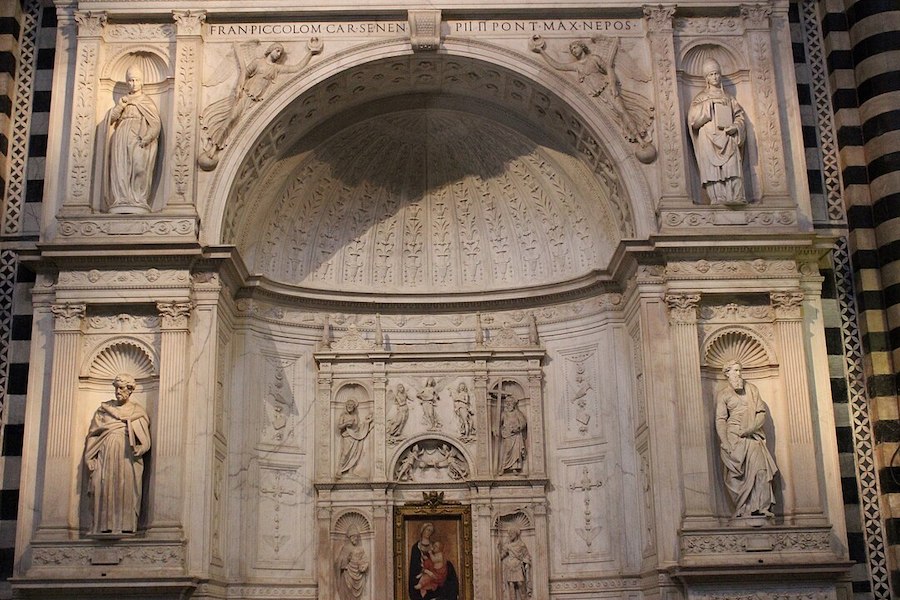 Photo by Miguel Hermoso Cuesta, CC BY-SA 4.0, via wikimedia
Photo by Miguel Hermoso Cuesta, CC BY-SA 4.0, via wikimedia
Along the left nave stands the Piccolomini Altar, commissioned by Cardinal Francesco Piccolomini in the 1480s as his future tomb. Piccolomini’s election to the papacy as Pius III meant that he was ultimately buried in the Vatican, but the monument still dazzles. Amongst the artists hired by Piccolomini to decorate the tomb was Michelangelo, who had recently completed the Vatican Pietà to great acclaim.
Framed between gilt reredos and colored marble, the four statues by Michelangelo - Saints Peter, Paul, Gregory, and Augustine - possess a restless energy: hair curls into life, draperies ripple, and musculature hints at the unique sculptural vernacular that was rapidly transforming Michelangelo into the art world’s greatest star.
7. The Dome and Bernini's Lantern
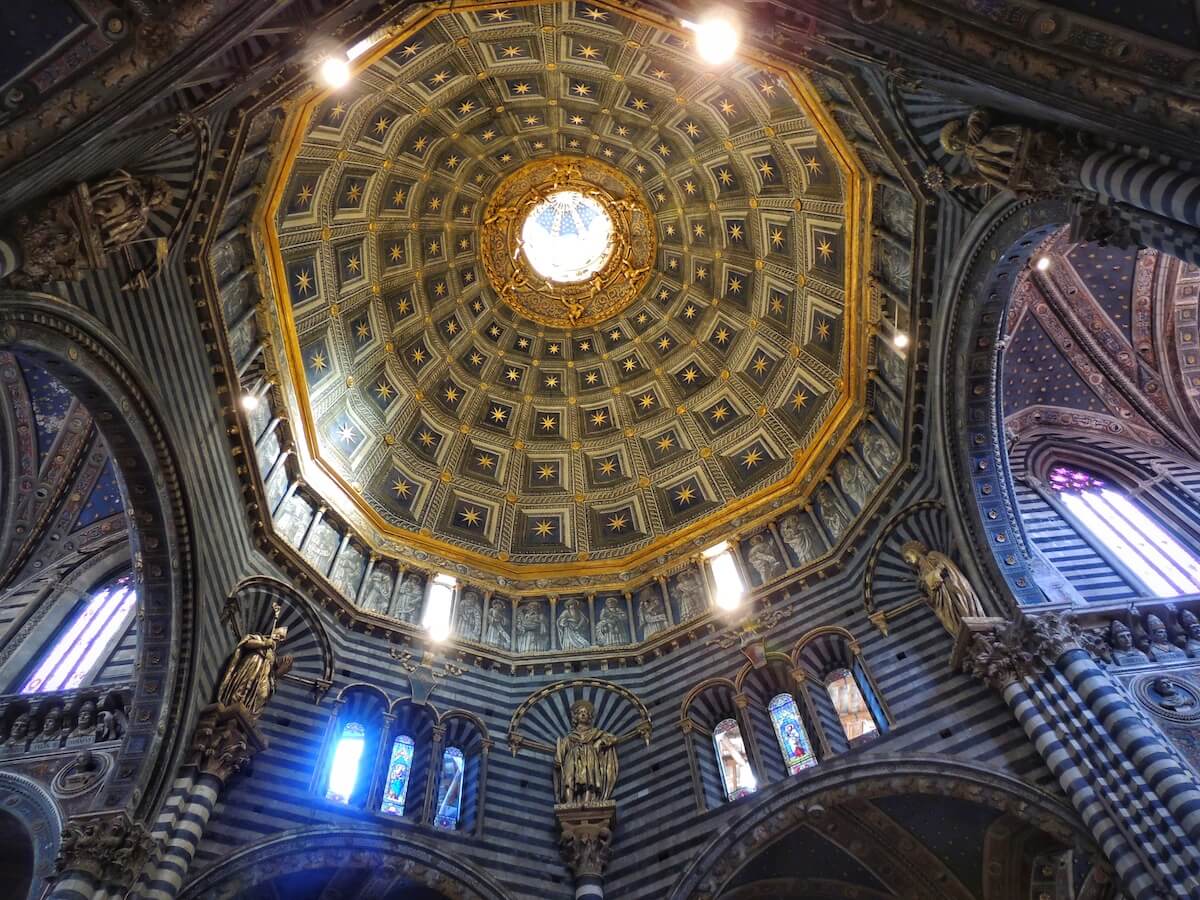
The celestial ceiling of Siena Cathedral reaches its climax beneath the great hexagonal dome, a luminous centerpiece that marks the crossing of nave and transept. In keeping with the Italian tradition of portraying heaven above and earth below, the dome transforms the soaring architecture into a vision of the divine. Its surface is freckled with dozens of tiny coffers, each cradling a golden star. Below, a drum encircles the dome with 42 sculpted and painted patriarchs and prophets. At the very summit, Gian Lorenzo Bernini’s exquisite lantern draws in shafts of sunlight, crowning the dome like a radiant beacon. Light filters through it like grace itself, illuminating the sacred space below and connecting the earthly church to the heavenly realm it evokes.
8. The Facciatone
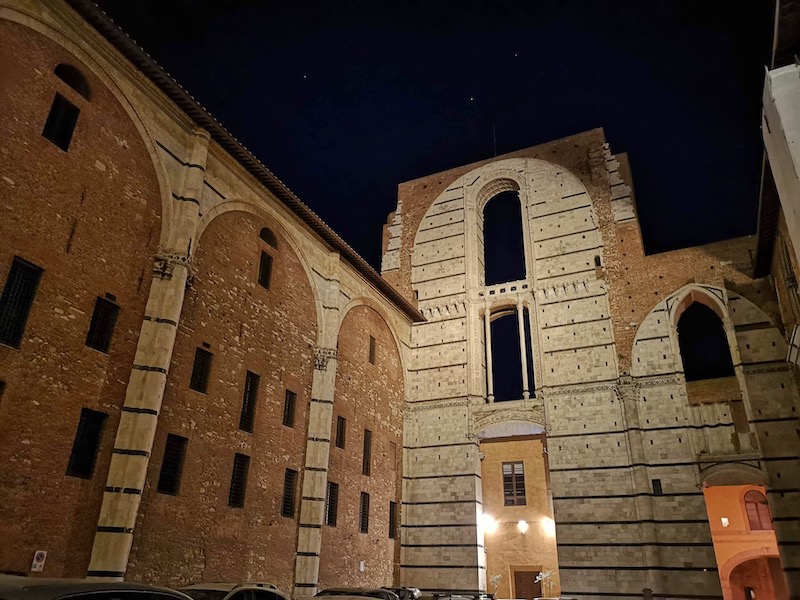
It’s hard to imagine, but Siena’s already majestic cathedral was once intended to be just a small part of a far grander whole. In the 1330s, flush with pride and wealth, the city launched a bold project to construct a ‘New Cathedral’—so vast that the existing Duomo would serve merely as its transept. Construction began in earnest, but destiny had other plans. The Black Death swept through the city in 1348, bringing the ambitious expansion to an abrupt halt. Siena never fully recovered, and the half-finished skeleton of this dream remains as a poignant echo of its lost golden age.
Today, you can climb the Facciatone, the monumental façade of the unrealized cathedral, for one of the most striking views in Tuscany. From its lofty perch, you’ll look out over the intricate rooftops of Siena, the shell-shaped Piazza del Campo, and the rolling hills beyond.
9. The Museo dell’Opera
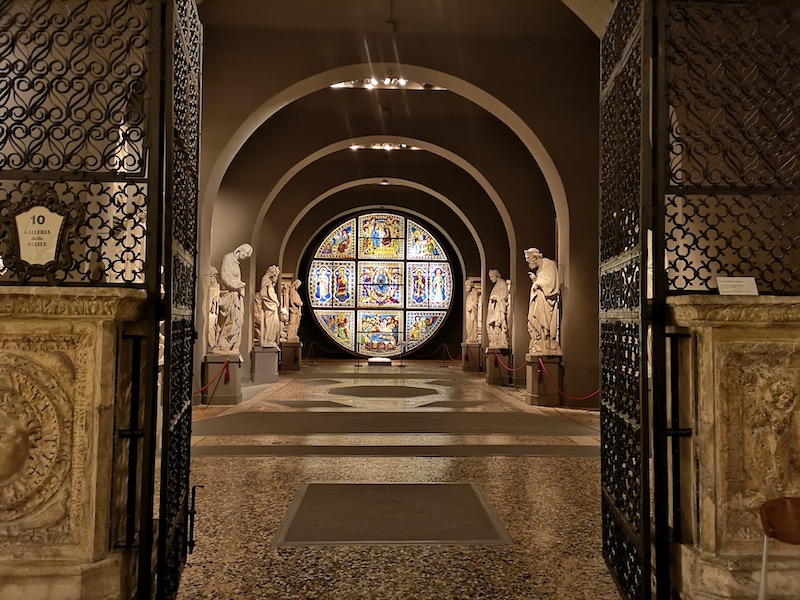
Next to the cathedral, the Museo dell’Opera houses many of the original artworks created for Siena’s Duomo, now protected from weather and time. The most important of these is Duccio di Buoninsegna’s Maestà, painted between 1308 and 1311 for the high altar. This enormous double-sided panel was a landmark in medieval painting. On the front, the Virgin and Child sit enthroned among saints and angels; on the reverse, 26 finely detailed scenes trace the Passion of Christ with striking clarity and drama. Duccio’s storytelling and use of space would shape the course of Italian painting for decades.
Also on view are sculptures by Giovanni Pisano from the cathedral façade. Their unusual proportions—broad torsos, oversized heads—weren’t mistakes, but clever adjustments to ensure the figures looked correct from far below, where they were originally placed.
10. The Baptistery
At the foot of the cathedral’s staircase, Siena’s Gothic baptistery contains one of the most important sculptural works of the early Renaissance: a hexagonal font decorated by leading artists of the 15th century. Donatello, Ghiberti, and Jacopo della Quercia each contributed bronze panels showing scenes from the life of John the Baptist, the font’s namesake.
Donatello’s Feast of Herod stands out for its bold composition and use of perspective, guiding the viewer’s eye through columns, arches, and shocked onlookers to the moment of the saint’s execution. The walls are covered with colorful frescoes from the same period, making the baptistery feel less like a side chapel and more like a self-contained artistic world.
MORE GREAT CONTENT FROM THE BLOG:
- The Complete Travel Guide to Siena
- What to See in Siena: A Weekend in Italy’s Finest Medieval City
- The Best Things to Do in Florence in 2024
- Where to Stay in Florence
- The Best Tours of Florence
- The Best Museums in Florence
- What to See in the Uffizi Gallery
- The Best Street Food in Florence
- Where to See Michelangelo in Florence
Through Eternity Tours offer a range of insider itineraries in Siena and Tuscany, so if you’re taking a trip to Tuscany this year check out our website or get in touch with our expert travel planners today!
–
